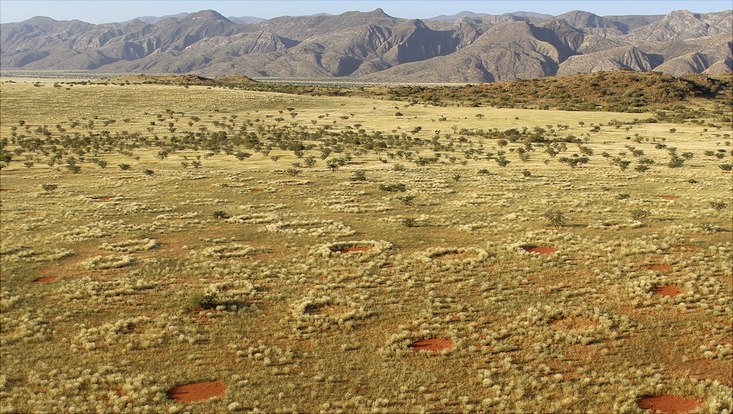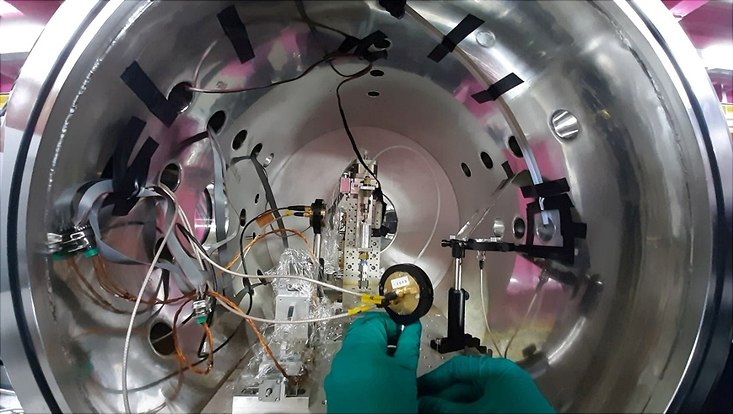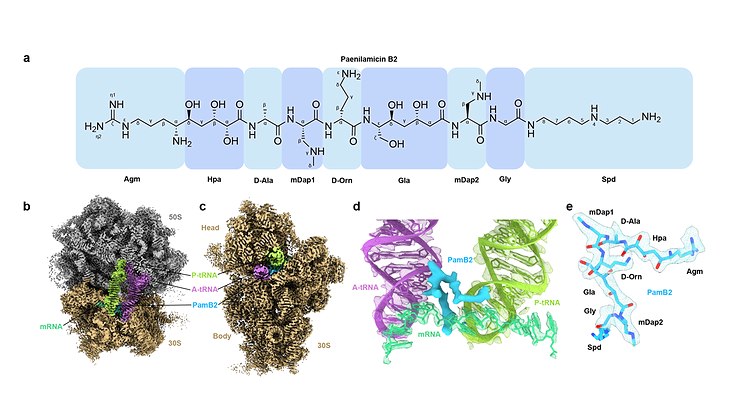and Natural Sciences
Termites as cause of fairy circles in Namib Desert confirmed
11 July 2023, by Maria Latos

Photo: UHH/MIN/Jürgens
In the debate about the cause of the mysterious bald circles in grasslands on the eastern edge of the Namib Desert, it has now been confirmed that termites are the cause. This is the result of a publication by researchers from the Department of Biology at Universität Hamburg in the journal "Perspectives in Plant Ecology, Evolution and Systematics" (PPEES).
For more than ten years, researchers have been discussing how the numerous circular bare patches in the middle of the African grasslands - the so-called fairy circles - can arise. In their current study "Sand termite herbivory causes Namibia's fairy circles - A response to Getzin", biologist Prof Dr Norbert Jürgens and soil scientist Dr Alexander Gröngröft from Universität Hamburg confirm that termites are the cause of the fairy circles. At the same time, they refute central arguments of the explanation put forward by ecosystem modellers that the circles are caused by self-regulation of the grasses.
As early as 2013, the Hamburg botanist Norbert Jürgens published, that purely subterranean sand termites of the genus Psammotermes cause the bare patches and, by eliminating the plants in the sandy soils, enable long-lasting storage of water after infrequent rainfall. This explanation, published in “Science”, was confirmed in the years that followed by entomologists from southern Africa (Prof Mike Picker, Dr Joh Henschel, Dr Kelly Vlieghe).
Other researchers also investigated the mysterious phenomenon, e.g. at the University of Göttingen using modelling approaches. The researchers published (Getzin et al. 2015, 2022) that the bare patches are caused by self-organisation of the grass plants, which draw water unevenly to themselves with their roots and through extensive diffusion in the sandy soils, thus causing the death of grasses in the bare patches. Furthermore, by measuring soil moisture beneath the fairy circlein 20 cm depth, they found desiccation, which they interpreted as caused fast horizontal sucking of water by the grasses of the surrounding.
Norbert Jürgens and Alexander Gröngröft now refute the central arguments of the modellers from Göttingen in the article published by PPEES: In their study, Jürgens and Gröngröft demonstrated the presence of sand termites on more than 1,700 fairy circles in Namibia, Angola and South Africa. The soil moisture measurements cited by Getzin et. al (2022) as evidence for the self-organisation hypothesis coincide with Jürgens' soil moisture measurements in 2013. However, the interpretations differ: While the modellers measure in the topsoil and interpret its drying out as withdrawal of water by the surrounding grasses, Jürgens showed in 2013 by simultaneous measurement at four different depths of up to 90 cm that the fairy circles in the subsoil store the water for a long time.
"Of even greater significance is that the analysis of my colleague Gröngröft and the measurements of the hydrological properties of the desert sand carried out in the laboratory invalidate the crucial foundations of the assumption of self-regulation," says Jürgens. "The water conductivity of the coarse-grained sand of the fairy circles, in which the termites live, is indeed very high when a lot of water is present during a heavy rain event, which can then quickly seep away in the large pores. However, the situation is completely different when the sand has released the easily movable water into the depths and has dried out to less than about eight percent of the soil volume. Then water is only stored at the points of contact between the sand grains, a continuous film of water is missing and the soil's ability to conduct water drops to very low levels. This means that at the levels of moisture found below fairy circles (≤5% by volume), very little liquid water transport can take place over short distances." The formation of dry sand layers on the soil surface directly above moist subsoil demonstrates this physical phenomenon.
"The horizontal water transports over metres in a few days assumed by the representatives of self-regulation are physically impossible according to current knowledge. The debate about opposing interpretations of a biological phenomenon is thus surprisingly decided by physics, in this case soil physics," says Jürgens. "The soil moisture measurements on the fairy circles and the soil hydraulic properties of the sand found in the laboratory thus rule out the self-regulation hypothesis as an explanation for the fairy circles. The cause for the formation of the fairy circles is thus clear - it is the sand termites that secure a considerable survival advantage through soil moisture storage."
Original publication(s)
Juergens N, Groengroeft A 2023 Sand termite herbivory causes Namibia´s fairy circles – A response to Getzin et al. (2022). PPEES 60: 125745 https://doi.org/10.1016/j.ppees.2023.125745
Juergens N, Groengroeft A, Gunter F 2023 Evolution at the arid extreme: the influence of climate on sand termite colonies and fairy circles of the Namib Desert. Philosophical Transactions of the Royal Society of London B 378: 20220149. https://doi.org/10.1098/rstb.2022.0149
Groengroeft A, Juergens N 2022 Soil moisture and hydrology of fairy circles. Biodiversity & Ecology 7, 186-198. doi:10.7809/b-e.00368
Juergens N 2022 Fairy circles of the Namib Desert – ecosystem engineering by subterranean social insects, pp. 1–376. Göttingen & Windhoek: Biodiversity & Ecology 7, Klaus Hess Publishers.


